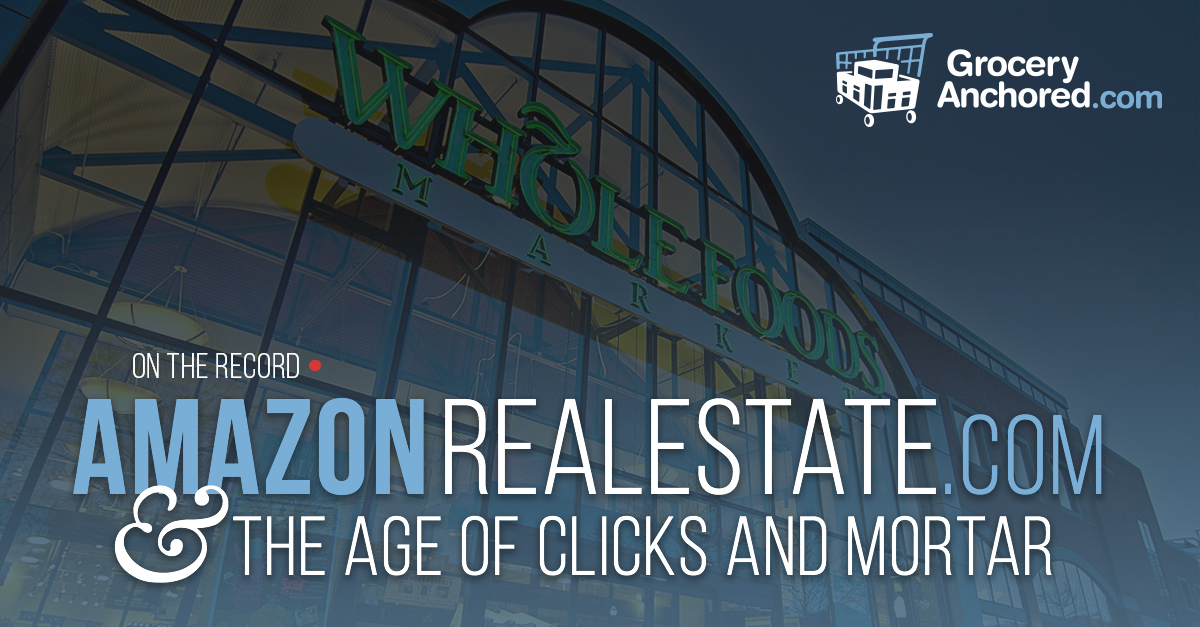www.AmazonRealEstate.com
What were you doing on April 24th, 2002? With the Internet gaining momentum a seemingly ubiquitous domain name was created on the World Wide Web.
It’s a term that you use multiple times per week. Any individual could have obtained this domain and used it. Any regional sized company could have swooped up this virtual real estate. Any global corporation could have laid claim. When I first typed it into my search bar I knew it wouldn’t be long before my industry was going to change.
The domain? www.groceries.com. The owner? Amazon.
What’s A “Twitter”?
At the end of 2016, I asked our research team to investigate the correlation between grocery stores and twitter. I theorized the grocery store having the most tech savvy customer would have the customer most likely to shop online, therefore having the most exposure to Amazon’s growth into the sector. The question ended up being more logical than the result. I’m not going to say I saw it coming, but I bought amazonrealestate.com after our team tested my hypotheses. Amazon registered 2.5 million twitter followers, which appeared to be significant until we looked at Whole Foods Market (WFM). With 4.8 million followers, WFM had nearly double the followers. That’s not a misprint. WFM had more “tech appeal” than nearly any other retailer, which made me nervous. It appeared to me that WFM had the most to lose with Amazon’s impending grocery entry, but I still questioned the wealth correlation narrative. Is an Amazon Prime shopper a WFM shopper?
The $3.1 trillion dollar money bag
A Piper Jaffrey’s report answered my question when their survey recorded that 82% of households earning north of $112,000 are Prime members. GroceryAnchored.com did the research on the individual WFM locations and found that the system wide three-mile average household income is an industry-leading $102,611. Do some back of the napkin math and you’ll find there are 30.6 million households (70 million people) within three miles of a WFM. Given the aforementioned report, I’d wager 70% are Prime members.
Bottom line: WFM and Amazon are going after the same $3.2 trillion dollar US household income, and it’s not a stretch to say that WFM’s decline in sales has been amplified by the rise of Amazon Prime. Looking at the acquisition from this perspective, WFM wins back customers the industry otherwise may never have seen again. But is the acquisition more about running a traditional store front in a nontraditional way, or is it more distribution driven?
That will be $13.7 Billion per Last Mile, Sir
The abbreviated Amazon business model: enter industry, offer unsustainable pricing, destroy industry, capture market share, own industry. Investors have endorsed this model so long as it has played out in the internet ether. Amazon has built 113 fulfillment centers consisting of over one-hundred million square-feet across the country. According to GroceryAnchored.com’s research these units are within 30 miles of over two-thirds of the US population. It’s reasonable to think the distribution web has been spun. I initially thought the WFM purchase represents acquisition of 436 smaller distribution hubs, but paying $13.7 billion just for distribution doesn’t add up. When was the last time you saw a flex industrial warehouse on Main & Main paying the cities highest rental rates? Exactly. Let’s not forget the expense of changing the building envelope to create backend cold storage space or delivery pickup stalls. We haven’t even talked municipality approval yet. Could it be that Amazon is actually going into the pure grocery business?
Now for the Hard Part
Becoming Walmart 2.0 will not be easy, so don’t expect the industry to fold like that suit your son just bought from Bonobos. Heck, nine days before the Amazon acquisition rightfully became the biggest story of the year, Publix Supermarkets announced every unit will have delivery by 2020. Imagine the “Publix reacts with…” headlines if they had waited just ten days to make that announcement. (Still looking for the article: “Publix delivery scares Amazon into buying Whole Foods”).
Kidding aside, let’s compare Amazon to just one of their new competitors to give you a sense of scale. Kroger sales topped $115 billion last year earning the company $2.0 billion. Its Simple Truth brand quietly grossed $1.7 billion alone. I don’t think people realize how closely that compares to Amazon, which registered $135 billion in sales with $2.3 billion in profit. I’m not prepared to say the difference is immaterial, but one must realize Amazon sells everything, while Kroger focuses solely on food, which has been headlong into the worst deflationary environment the grocery industry has seen in 35 years. Remember, this is an industry that sustained Walmart’s entry in the 1990s.
Final Thought
Between Kroger’s restated 2017 guidance last Thursday and Amazon’s purchase of Whole Foods last Friday, grocery stocks lost a combined $40 billion dollars in market value over two business days. So why am I happy? Lost in the market’s expected overreaction is the $13.7 billion dollar endorsement by one of the world’s most innovative companies of the grocery-anchored real estate model. Amazon has taken apart every retail ecosystem they’ve ever encountered without physical storefront deployment until sizing up the grocery-anchored shopping center business. Hey Landlords, Amazon just paid $31.3 million per store to be a tenant in your grocery-anchored center. You just received a lifetime membership to the Retail Relevance Club. Cross your fingers, hope the deal goes through, and go console a mall owner when you have a spare minute.
GroceryAnchored.com 6.22.2017

